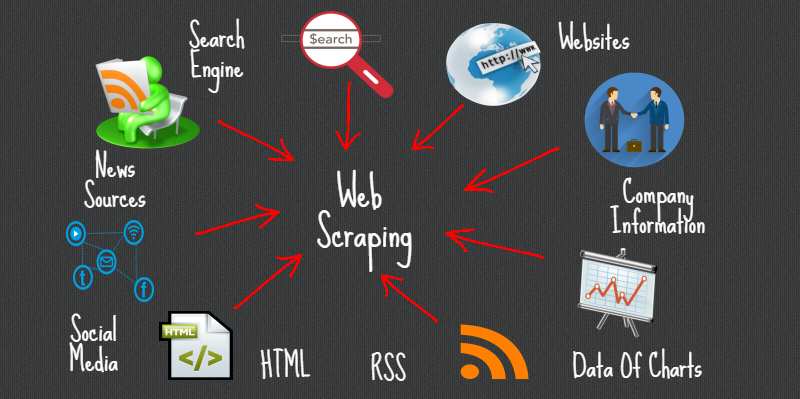If you aren’t familiar with scraping the web, it is the art or ability to gather information off of a website in an organized way. There are several fantastic web scrapers available for sourcers to use.
Data Miner
First up is Data Miner; which is a scraping tool that relies on you to tell it what data you want, where to put it etc. Data Miner works with things called recipes. Recipes are the instructions that the tool uses to know what to scrape and were to put it.
Let’s say you are on a site that you want to collect information or scrape. Click on the Data Miner icon and once it opens the first thing you should do is look at the top and go to the section that says “public.” Here you can find free recipes that others have created. If there is a recipe already created that works, you don’t need to create your own. If there isn’t a recipe, then you need to create your own.
Creating your recipe is a simple point and click motion.
When you start creating your recipes, there will be a lot of options, most importantly pagination, so you don’t have to scrape page by page. You can save and share your recipes.
There is another way to use this tool. Just highlight the data you want, right click and click the Data Miner icon and watch it do its stuff. Now, this is not as organized, but still gets you the stuff you want.
I find Data Miner works best on data that is not organized but can work on virtually any site.
Data Miner also can double scrape or “job,” or create two recipes. You can create one recipe for the initial search results scrape and another for scraping profiles. This video explains this process.
ZAPinfo
ZAPinfo is also a type of scraping tool, but it does a lot more than scrape web pages. It also enhances, meaning it will find contact information. It also allows you to verify email addresses.
This tool works best on organized data, such as Facebook search results, speaker or attendee lists, etc. Just go to the site you are interested in and click the ZAPinfo icon in the ribbon, and follow the directions. No recipes needed.
When you click clip data scrape you will get the choice of extract records from the page, bulk capture form page, import records, create new manually or upload a PDF or resume.
The upload choice is mainly so you can upload lists of people for ZAPinfo to enhance and find more information. Some of the features you will also see is the ability to grab full profiles from a search results Zap, meaning a scrape of an x-ray into a social site. You can get the information the x-ray shows but also have it go into the social site and get the rest. When you choose this, you will have the ability to state how long the tool should wait from going from one profile to another. This is very important as it can keep you out of trouble. The let the tool do the work. You will be notified when it is done and will be able to view results as well as select to have it enhanced to get more. You can export, as well as do further enhancement.
You should always use more than one tool to do a specific function. Data Miner and ZAPinfo have similar functionalities. However, neither works in every situation. Used together, I have not found a situation where one of them did not work. For example, if I want to scrape Facebook, I would use ZAPinfo as it can not only scrape Facebook but find email addresses. However, if I were going to scrape something with multiple pages, I would use Data Miner as it has auto pagination.
